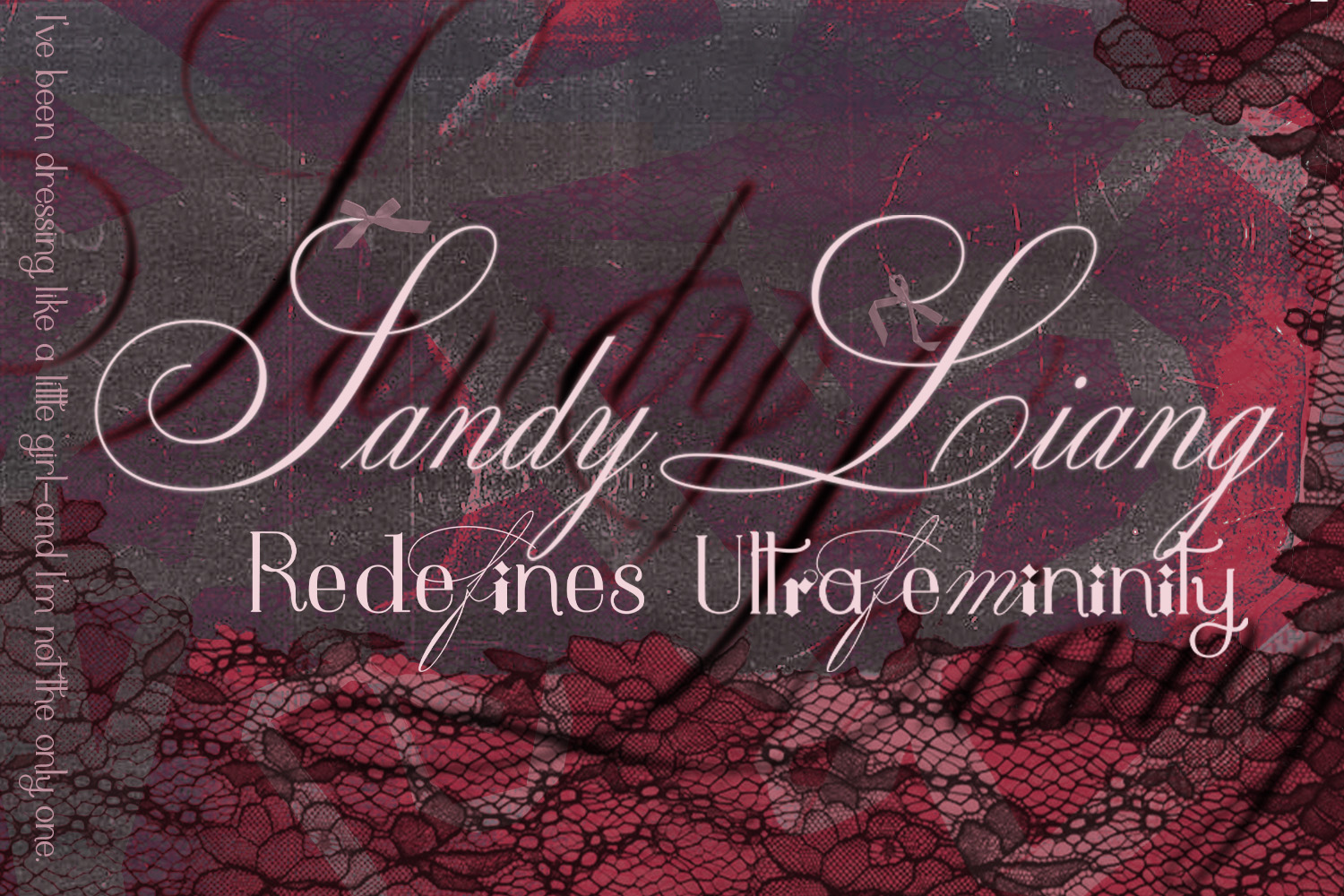I’ve been dressing like a little girl–and I’m not the only one.
No single catalyst has been attributed to the rise in blokette fashion, the fusion of feminine and masculine styles. However, a blend of nostalgia and a desire for control lies at the core of this burgeoning movement. Culture and fashion YouTuber, Mina Le, suggests this shift may be a trauma response to over-arching health and safety concerns, as well as the increased demonization of femininity. Whatever your take, one grown-little-girl emerges at the forefront.
New York fashion designer, Sandy Liang, has become a beacon for girly fashion. Since her brand’s debut in 2014, she’s developed subversive styles reminiscent of her childhood and cultural heritage. Every design is interwoven with a strand of Liang’s personal history, from traces of Chinatown grandmothers to pop-culture icons like Sailor Moon. Sandy Liang is all about building connections, leaning on lived-experiences to drive her designs.
It makes sense, then, that her clothes don’t fall under one genre, a thriving blend of contrasting aesthetics–just as you might find in a little girl’s closet. Liang’s authenticity has garnered her a significant following, with fans flocking to her online storefront in hopes of securing a pair of strappy Mary Jane flats or a satin-blossom scrunchie. A grittiness underscores Liang’s girly aesthetic, where skirts are cropped, shirts are sheer, and everything’s painted black.
Liang imbues her edgy-coquette style into careful collaborative efforts. Just this August, Sandy Liang launched a line of canvas totes and bow bags with sustainable bag company, Baggu. The collection sold out in mere minutes, causing an uproar among fans desperate for restocks. In an earlier partnership with sporting goods brand, Salomon, Liang designed a pastel-pink technical sneaker that sold out within seconds of its release.
Inside star-studded closets, Sandy Liang’s influence has created a platform for Asian-American women. Michelle Zauner, lead vocalist of Japanese Breakfast, identifies with Liang’s nuanced approach to girlhood, where masculine and feminine aesthetics exist cohesively. “I’m able to wear a dress and tread, and that juxtaposition is really exciting to me,” said Zauner in an interview with Vogue. Up-and-coming actor, Lola Tung, has become another notable Sandy Girl, sporting styles from her Mochi Top and Serin Skirt ensemble at “The Summer I Turned Pretty” season 2 party to her all-red Venice Dress look at New York Fashion Week. Like Liang, Tung and Zauner embrace girliness in their own way, something girls of every experience can resonate with.
I too yearn for simpler days, sporting a tutu to soccer practice or donning my prized Hello Kitty fedora at the local Olive Garden. I can’t recall a time in my life where I felt so carefree, proud, and fully me. I think that’s why myself and so many women are enamored by Sandy Liang’s designs. She crafts a space for women to escape and reclaim a piece of our uninhibited past-selves. In an outfit, we’re allowed to dream again, imagining ourselves in a Sofia Coppola film or stealing a goal in ballet flats. You’re that kid, untempered by expectations, wearing a tartan skirt and sneakers–and it doesn’t matter what others think because it makes sense to you.
Words by Alex Armbruster.
Graphic by Anca Dubalaru.

